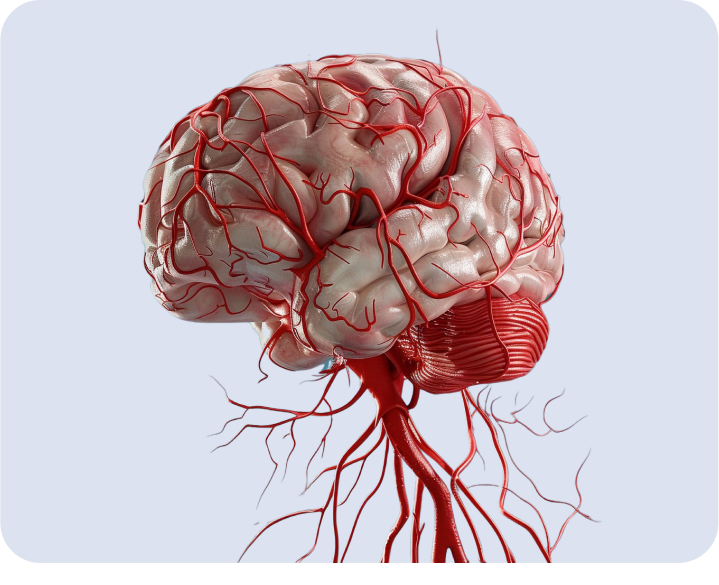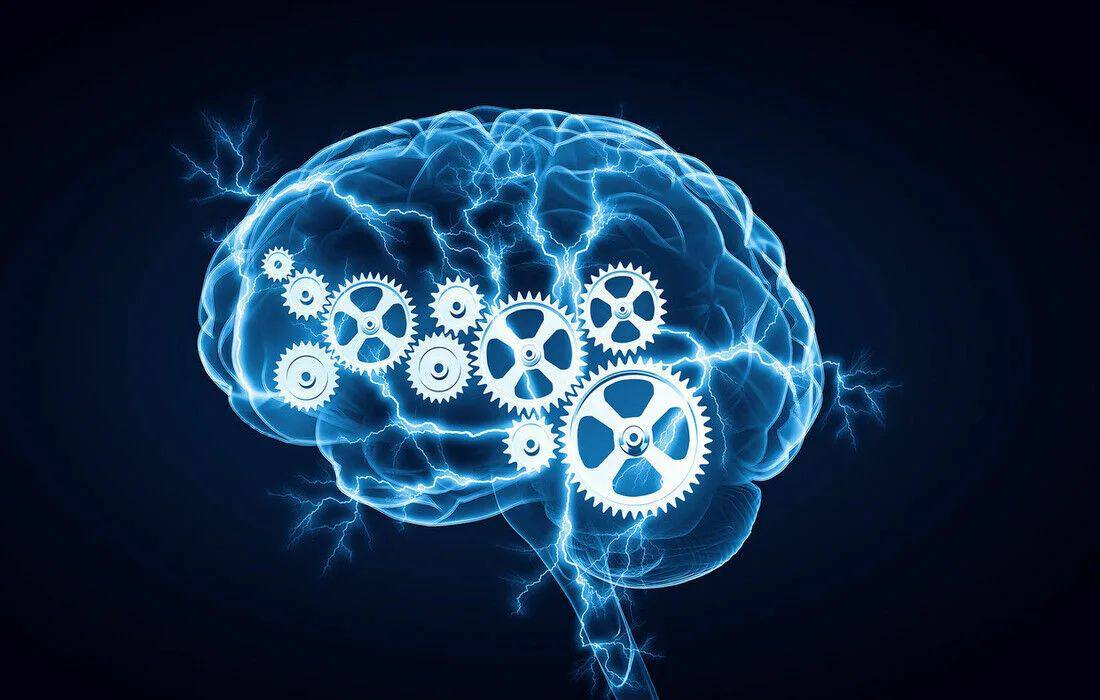Library - Page 9
Registered on ClinicalTrials
Study of the effectiveness and safety of the sequential use of Mexidol and Mexidol Forte 250 in the treatment of patients with acute ischemic stroke
Authors:
S.M. Karpov 1 , M.Yu. Morozova 2 , K.A. Muravyov 2 , I.A. Prisilova 1 , F.S. Kantemirova 3
COVID-19-SSSOCIETED STROKE
Authors:
IA Shchukin, 1 MS Fidler, 1 IA Koltsov, 1 and A. Yu. Suvorov2
Translated from Zhurnal Nevrologi I Psikhiatrii Imeni SS Korsakova, Vol. 121, no. 12, ISS. 2, pp. 69–76,
December 2021. Original Article Submitted December 20, 2021. Accepted December 22, 2021.
Place of publication:
Neuroscience and Behavioral Physiology, Vol. 52, no. 5, June, 2022
Pharmacotherapy in post -industry rehabilitation
Authors
Gnedovskaya E.V. , Lukmanov R.Kh. , Rimkevichus A.A. , Suponeva N.A.
Place of publication:
SS Korsakov Journal of Neurology and Psychiatry, 2022
Chronic cerebral ischemia
Authors:
Khlynova O.V. , Skachkova V.V.
FSBEI in Perm State Medical University named after Acad. E.A. Wagner "of the Ministry of Health of Russia
Place of publication:
Therapy No. 5 (47) 2021
Biomarkers of vascular cognitive dysfunction
Authors:
Zimnitskaya O.V., Mozheiko E.Yu., Petrova M.M.
FSBEI in “Krasnoyarsk State Medical University named after Prof. V.F. Voino-Yasenetsky” of the Ministry of Health of Russia. Krasnoyarsk, Russia
Place of publication:
Cardiovascular therapy and prevention. 2021
Chronic brain ischemia - interdisciplinary problem
Authors:
Chukanova E.I., Chukanova A.S., Bagmanan S.D.
FGAOU in the Russian National Research Medical University named after N.I. Pirogov »Ministry of Health
of Russia, Moscow
Place of publication:
Therapy No. 5 (47) 2021
The effectiveness and safety of therapy of drugs Mexidol and Mexidol Forte 250 in patients with chronic brain ischemia
Author:
L.A. Shchepankevich 1.2 , Yu.A. Nikolaev 1 , E.V. Taneyeva 3 , M.A. Pervuninskaya 1 , M.S. Shchepankevich 1.2
Features of patients with traumatic brain injury
Authors:
M.L. Chukhlovina 1 , A.A. Chukhlovin 2
1 FSBEI "National Medical Research Center named after V.A. Almazova "of the Ministry of Health of Russia, St. Petersburg, Russia;
2 Russian Research Neurosurgical Institute. Prof. A.L. Polenova - branch of FSBEI "National Medical Research Center named after V.A. Almazova "of the Ministry of Health of Russia, St. Petersburg, Russia
Vascular inflammation based on the development of atherotrombotic stroke
Authors:
A.V. Romanenko, I.P. Amelina, E.Yu. Soloviev
FGAOU in Russian National Research Medical University named after N.I. Pirogov »Ministry of Health of Russia, Moscow, Russia
Features of response to the stress of elderly men and women with chronic brain ischemia
Authors:
Slyusar T.A., Abramenko Yu.V., Rubin S.S., Mayorov R.V., Slyusar I.N.
FSBEI in the Tver State Medical University of the Ministry of Health of Russia, Tver
Clinical effectiveness of antioxidant therapy with Mexidol Fort 250 patients with chronic cerebral venous deficiency
Authors:
E.I. Chukanova, A.S. Chukanova, H.I. Mamaeva
FGAOU in Russian National Research Medical University named after N.I. Pirogov »Ministry of Health of Russia, Moscow, Russia
The influence of Mexidol on the quality of life and the functional status of patients with chronic ischemia of the brain and chronic heart failure with a low emission fraction
Authors:
V.V. Tolkacheva 1 , E.R. Kazamedov 1 , railway Kobalava 1 , S.A Galochkin 1 , A.V. Schulkin 2
1 FGAOU in Russian University of Friendship of Peoples, Moscow, Russia;
2 FSBEI in the Ryazan State Medical University named after Acad. I.P. Pavlova "of the Ministry of Health of Russia, Ryazan, Russia
The effectiveness and safety of the use of ethylmethylhydroxypyridine of succinate in the framework of sequential therapy in patients with chronic brain ischemia
Author:
V.V. Burdakov, D.V. Red
FSBEI in Orenburg State Medical University of the Ministry of Health of Russia, Orenburg, Russia
The effectiveness and safety of the use of ethylmethylhydroxypyridine of succinate in patients with acute ischemic stroke
Authors:
M.V. Zhuravleva 1.2 , I.A. Schukin 3 , M.S. Fidler 3 , A.B. Prokofiev 1.2 , S.Yu. Serebrova 1.2 , N.S. Vasyukova 4 , E.Yu. Demchenkova 1 , V.V. Arkhipov 1
The effectiveness and safety of Mexidol in patients of different age groups in the acute and early recovery periods of the hemisphere ischemic stroke (the results of subanarized a randomized double blind multicenter placebo-controlled in parallel groups of the study of epic)
L.V. Stakhovskaya 1 , E.A. Mkhitaryan 2 , O.N. Tkachev 1.2 , T.M. Ostroumova 3 , O.D. Ostroumova 3.4
1 FGAOU in Russian National Research Medical University named after N.I. Pirogov »Ministry of Health of Russia, Moscow, Russia;
2 Russian Gerontological Scientific and Clinical Center of the FGAOU in the Russian National Research Medical University named after N.I. Pirogov »Ministry of Health of Russia, Moscow, Russia;
3 FGAOU in the First Moscow State Medical University named after THEM. Sechenov »Ministry of Health of Russia (Sechenov University), Moscow, Russia;
4 FSBEI of DPO “Russian Medical Academy of Continuing Professional Education” of the Ministry of Health of Russia, Moscow, Russia
Place of publication:
a journal of neurology and psychiatry named after S.S. Korsakova, 2020, T.120, No. 8, Issue 2
The effectiveness of the use of ethylmethylhydroxypyridine of succinate in patients with cerebrovascular pathology against the background of diabetes and metabolic syndrome
Authors:
E.V. Ekusheva 1.2 , E.V. Biryukova 3
1 FSBI “Academy of post-sex education“ Federal Scientific and Clinical Center for Specialized Medical Assistance and Medical Technologies of the Federal Medical and Biological Agency ”, Moscow, Russia;
2 FGAOU Belgorod State National Research University, Belgorod, Russia;
3 FSBEI in the Moscow State Medical and Dome University named after A.I. Evdokimova »Ministry of Health of Russia, Moscow, Russia
THE INFORMATION IS INTENDED FOR HEALTHCARE AND PHARMACEUTICAL PROFESSIONALS. THIS INFORMATION IS NOT INTENDED AS A SUBSTITUTE FOR MEDICAL ADVICE.
Source of photos and images Shutterstock.com














